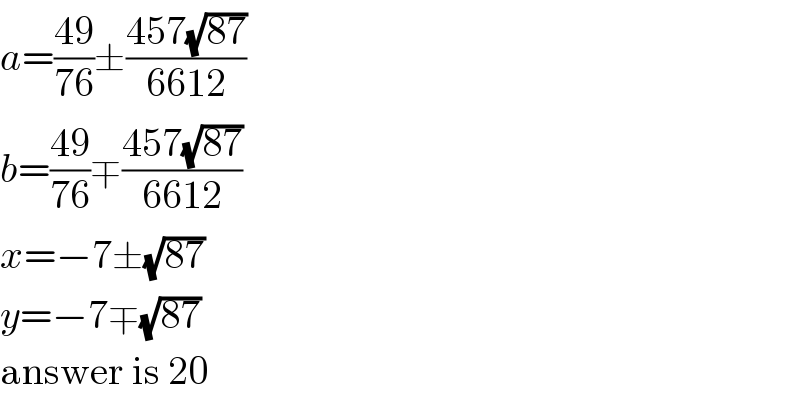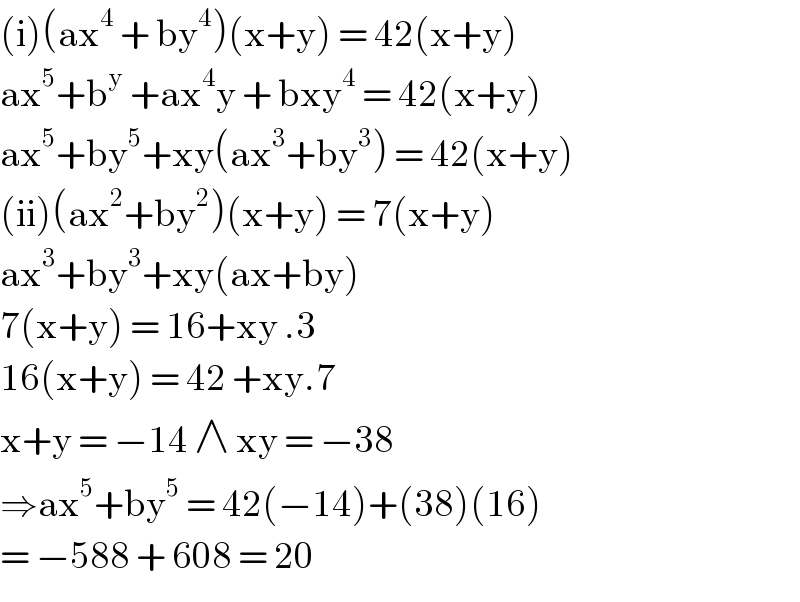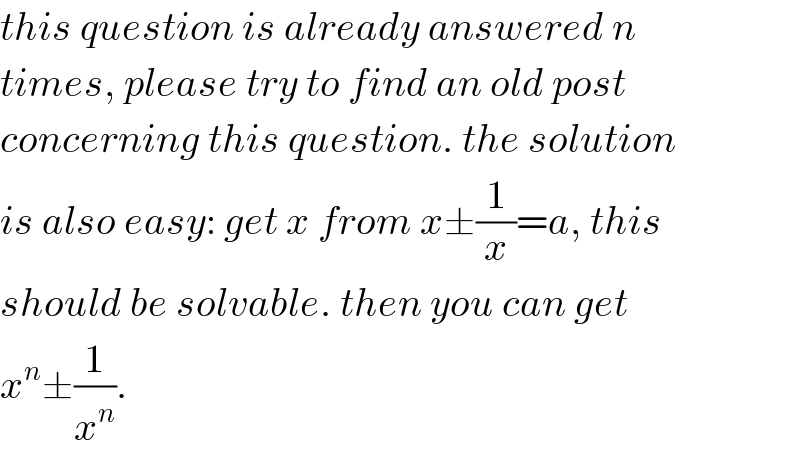
Question and Answers Forum
Question Number 87533 by mr W last updated on 04/Apr/20

Commented by MJS last updated on 05/Apr/20

Commented by mr W last updated on 05/Apr/20

Answered by ajfour last updated on 05/Apr/20

Commented by mr W last updated on 05/Apr/20

Commented by ajfour last updated on 05/Apr/20

Commented by mr W last updated on 05/Apr/20

Answered by john santu last updated on 05/Apr/20

Commented by ajfour last updated on 05/Apr/20

Commented by jagoll last updated on 05/Apr/20

Commented by mr W last updated on 05/Apr/20

Commented by mr W last updated on 05/Apr/20

Answered by mr W last updated on 26/Oct/21

Commented by john santu last updated on 05/Apr/20

Commented by mr W last updated on 05/Apr/20

Commented by TawaTawa1 last updated on 05/Apr/20

Commented by TawaTawa1 last updated on 05/Apr/20

Commented by mr W last updated on 05/Apr/20

Commented by TawaTawa1 last updated on 05/Apr/20

